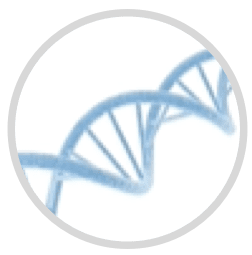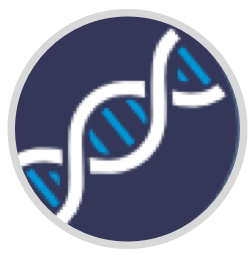Diagnosis
A definitive diagnosis of Gaucher disease is established by:
- Glucocerebrosidase enzyme assay: demonstrating deficiency1
- GBA gene sequencing: demonstrating 2 pathogenic variants in trans (one from each parent). Though identification of pathogenic alleles is not required for diagnosis, it can provide secondary confirmation and important information related to phenotype
- Six pathogenic variants account for the majority (97%) of all pathogenic alleles in patients of Ashkenazi Jewish heritage2
Gaucher disease has a wide phenotypic spectrum ranging from severe neuronopathic forms to
chronic visceral forms, with a chronic neurovisceral form between these two ends of the spectrum.3,4 Gaucher disease presents with: anemia, thrombocytopenia, splenomegaly, and bone involvement due
to displacement of normal marrow cells with disease-affected cells resulting in bone pain, osteopenia, and growth retardation in children.3,4

New to molecular testing?
This short video provides general education on molecular testing for healthcare providers who are unfamiliar with the process.

For more information on diagnosing Gaucher disease, including a list of labs offering GBA gene sequencing or glucocerebrosidase enzyme activity assay, watch this short video.
Biomarker: Glucosylsphingosine (lyso-GL-1)
Glucosylsphingosine (lyso-GL-1) is the deacylated form of glucosylceramide (GL-1). Both lyso-GL-1 and
GL-1 accumulate in Gaucher disease as a direct result of acid β-glucosidase deficiency, making lyso-GL-1
a highly specific biomarker.

Pandey MK, Grabowski GA, Kohl J. Semin Immunol. 2018 June;37:30–42.

To read more about lyso-GL-1, including testing options.
References:
1. Mistry PK, et al. Am J Hematol. 2011;86(1):110–5. 2. Bronstein S, et al. Isr Med Assoc J. 2014;16(11):683–685. 3. Baris HN, et al. Pediatr Endocrinal Rev. 2014;12 Suppl 1 (01):72–81.
4. McGovern MM, et al. Orphanet J Rare Dis. 2017;12(1):41.
Next in Gaucher Disease
